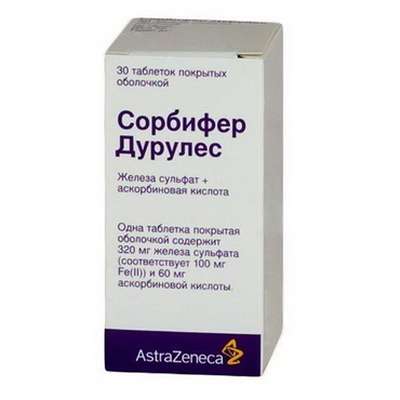Indications
Treatment for a new coronavirus infection (COVID-19).
Method of administration and dosage
Inside, 30 minutes before meals.
For the treatment of novel coronavirus infection (COVID-19) caused by the SARS-CoV-2 virus, the following dosing regimen is recommended:
- for patients weighing <75 kg, 1600 mg (8 tablets) 2 times on the 1st day of therapy, then 600 mg (3 tablets) 2 times a day, respectively, from the 2nd to the 10th day of therapy ;
- for patients weighing ≥75 kg, 1800 mg (9 tablets) 2 times on the 1st day of therapy, then 800 mg (4 tablets) 2 times a day, respectively, from the 2nd to the 10th day of therapy ...
The drug should be taken on the basis of the clinical picture and / or after laboratory confirmation of the diagnosis and in the presence of characteristic clinical symptoms.
The total duration of the course of treatment is 10 days or until confirmation of the elimination of the virus, if it occurs earlier (two consecutive negative results of PCR studies, obtained with an interval of at least 24 hours).
Pharmachologic effect
Antiviral activity in vitro
Favipiravir has antiviral activity against laboratory strains of influenza A and B viruses (half maximum effective concentration (EC50) 0.014-0.55 μg / ml).
For strains of influenza A and B viruses resistant to adamantane (amantadine, rimantadine), oseltamivir or zanamivir, the EC50 is 0.03-0.94 μg / ml and 0.09-0.83 μg / ml, respectively. For influenza A strains (including strains resistant to adamantane, oseltamivir and zanamivir) such as type A swine influenza and type A avian influenza, including highly pathogenic strains (including H5N1 and H7N9), the EC50 is 0.06-3.53 μg / ml.
For strains of influenza A and B viruses resistant to adamantane, oseltamivir and zanamivir, the EC50 is 0.09-0.47 μg / ml; cross-resistance is not observed.
Favipiravir inhibits the SARS-CoV-2 virus, which causes the new coronavirus infection (COVID-19). The EC50 in Vero E6 cells is 61.88 μmol, which corresponds to 9.72 μg / ml.
Mechanism of action
Favipiravir is metabolized in cells to favipiravir ribosyl triphosphate (Favipiravir RTF) and selectively inhibits RNA-dependent RNA polymerase involved in influenza virus replication. RTF favipiravir (1000 μmol / L) showed no inhibitory effect on human αDNA, but showed an inhibitory effect in the range from 9.1 to 13.5% on β and in the range from 11.7 to 41.2% on human γDNA. The inhibitory concentration (IC50) of RTF favipiravir for human RNA polymerase II was 905 μmol / L.
Resistance
After 30 passages in the presence of favipiravir, no changes were observed in the susceptibility of influenza type A viruses to favipiravir, and no resistant strains were observed either. In the clinical studies conducted, the appearance of influenza viruses resistant to favipiravir was not detected.

 Cart
Cart






